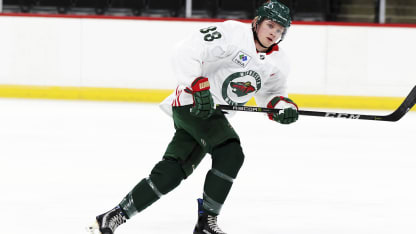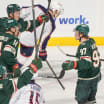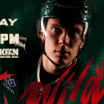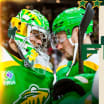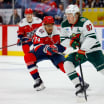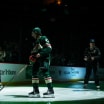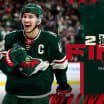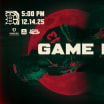And with the successes of smaller players in recent years, the old stereotypes surrounding shorter players no longer exist.
For a long time, it was believed that unless a player was a certain height/weight combo, he was simply "too small" to play in the NHL.
Tell that to Martin St. Louis, the longtime Tampa Bay Lightning star, who, despite his 5-foot-8 frame, will be inducted into the Hockey Hall of Fame later this year in Toronto.
Or the Calgary Flames Johnny Gaudreau, who at 5-foot-9 and 157 pounds, is currently one of the NHL's most explosive players.
At the Wild's development camp earlier this month, there were a number of players under six feet tall who were making an impact.
One of those was invitee Carter Randklev, a Moorhead native who will begin his collegiate career at the University of North Dakota in the fall of 2019.
Randklev might be generously listed at 5-foot-7 and 150 pounds, but it's his slipperyness and ability to put the puck in the net that could get him drafted in the NHL Draft next summer.
A standout at Moorhead High School, Randklev has never been the biggest guy on whatever team he's played on. Quite the opposite; typically, he's been the smallest.
But over the years, he's found a way to overcome that by using his strengths in other areas.
"There's different aspects of your game that you can perfect that can help you progress at each level you play at," Randklev said. "For me, I always got pushed around. It's harder for me to get bigger; my body is not one of those that can just gain 20 pounds like it's nothing. I gotta work on getting faster and try to out-skate guys or out-compete guys."
Randklev did just that over a three-year varsity career at Moorhead, scoring 24 goals and 41 points in 25 games as a senior last season, and 26 goals and 40 points during his junior season.
He's also scored nine points in 15 games with the Fargo Force in the USHL over the past two seasons, the club he will play with for the entire upcoming season before heading north to Grand Forks.
The devil for him is in the details, especially during the summer when he perfects his skating stride by doing plenty of edge work.
"That gets me a lot faster and hopefully will help me progress," Randklev said. "Guys, even though they are bigger than me, they might be able to skate just as fast as me, I can work on my shot to help me make up for being the smallest guy on the ice."
Gerry Fitzgerald also knows what it's like to play at a high level despite being on the shorter side.
At 5-foot-8 and 170 pounds, Fitzgerald tallied three 25-plus point seasons at Bemidji State University before moving on to begin his professional career last spring in a 16-game stint with the Iowa Wild.
In those 16 games, Fitzgerald scored four goals and had eight points and didn't look out of place in the slightest.
In fact, it was a jump to professional hockey that may have brought out the best in Fitzgerald, a level where his speed and skill was better utilized, albeit in a much smaller sample size.
"I think it suited my game," Fitzgerald said. "It's a little bit more about using your skill out there. You have to be quick getting to those areas to retrieve the puck. It's more of a skilled game in the AHL because everyone is so skilled and so smart."
Fitzgerald said he remembered even when he was a kid when the bigger players were often favored.
But those times seem to be changing.
"I think the game has changed for smaller players, maybe to their advantage," Fitzgerald said. "I think it's more of a skill-based game and you get a penalty doing almost anything. You've gotta be good with your stick, no grabbing and stuff like that.
"The game changing has definitely helped me out a bit but you've still gotta be good at those little things and you've still gotta grind like we did back then. Smaller guys are getting a chance that maybe they wouldn't have back then."
Related:
- A look back at development camp
